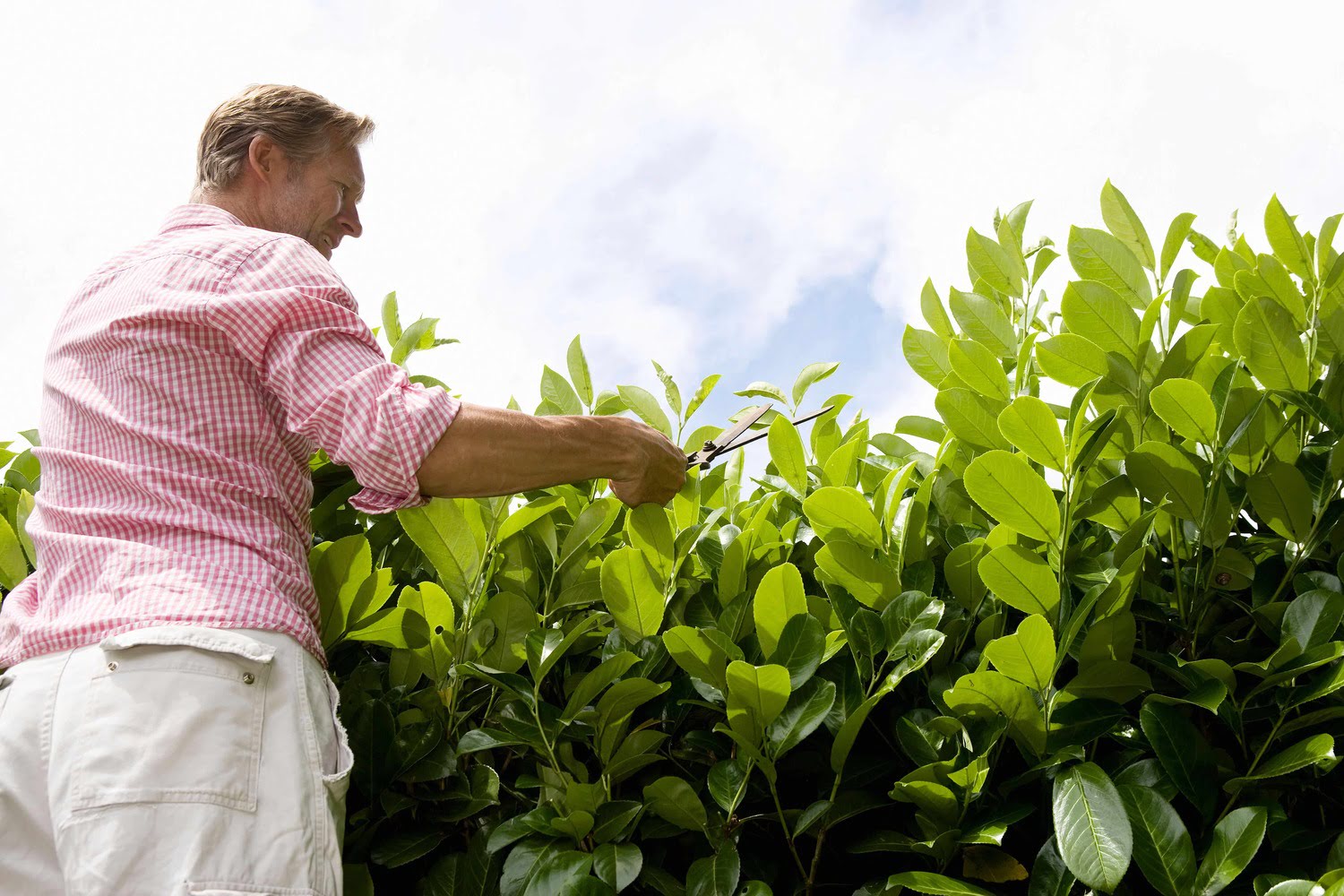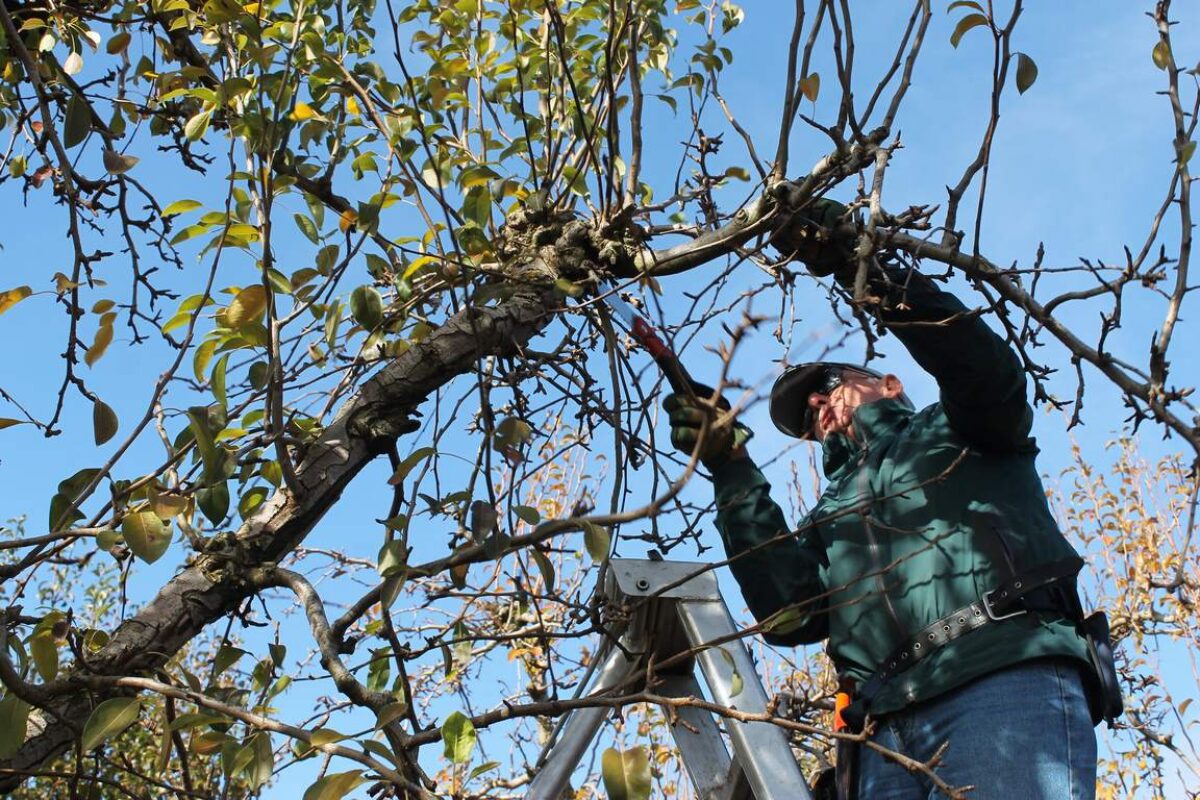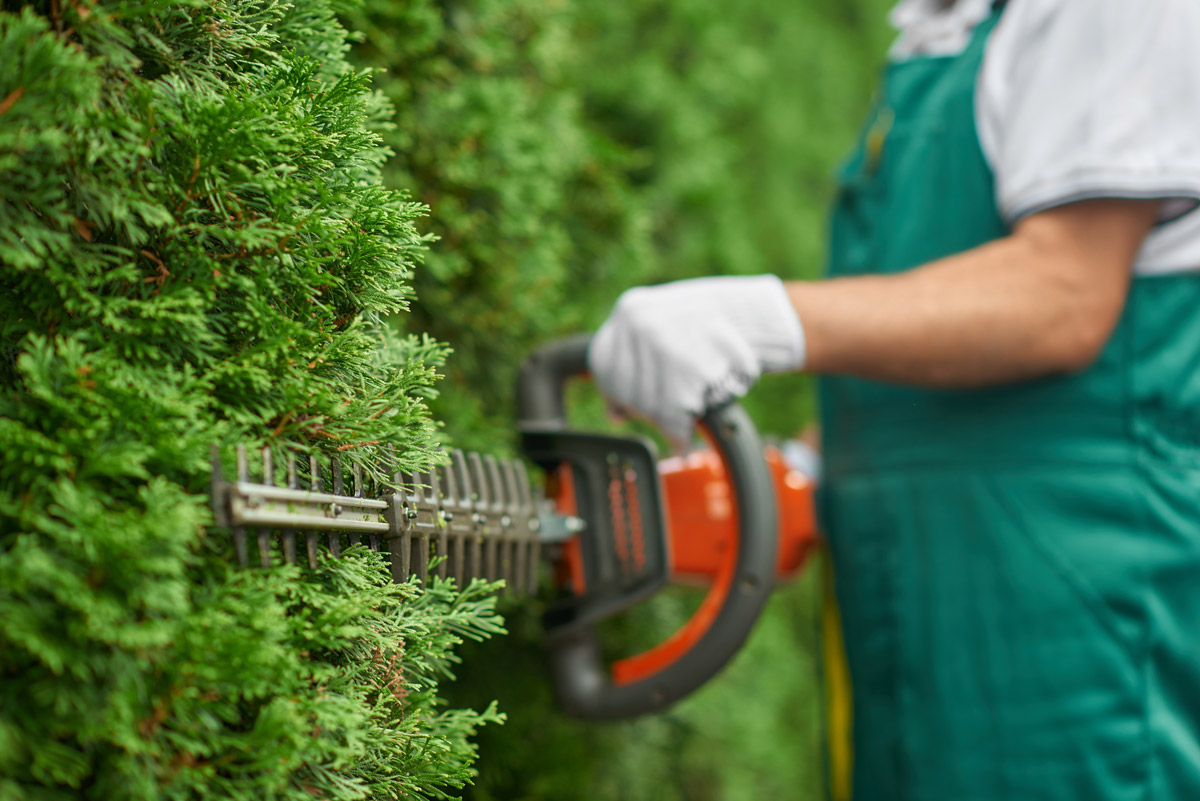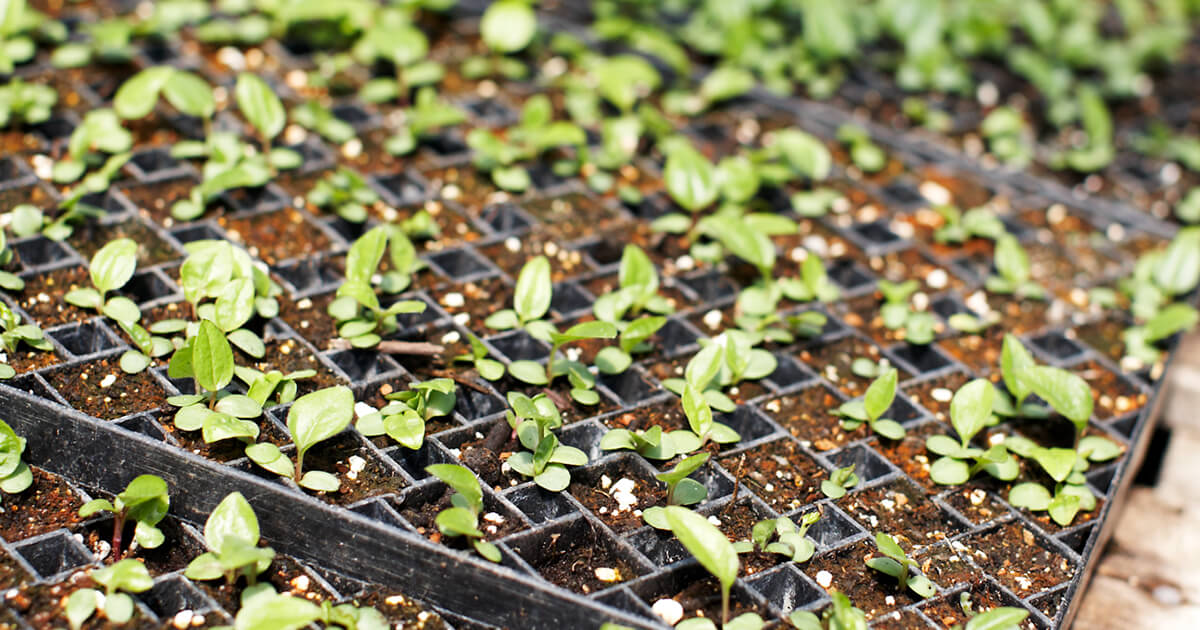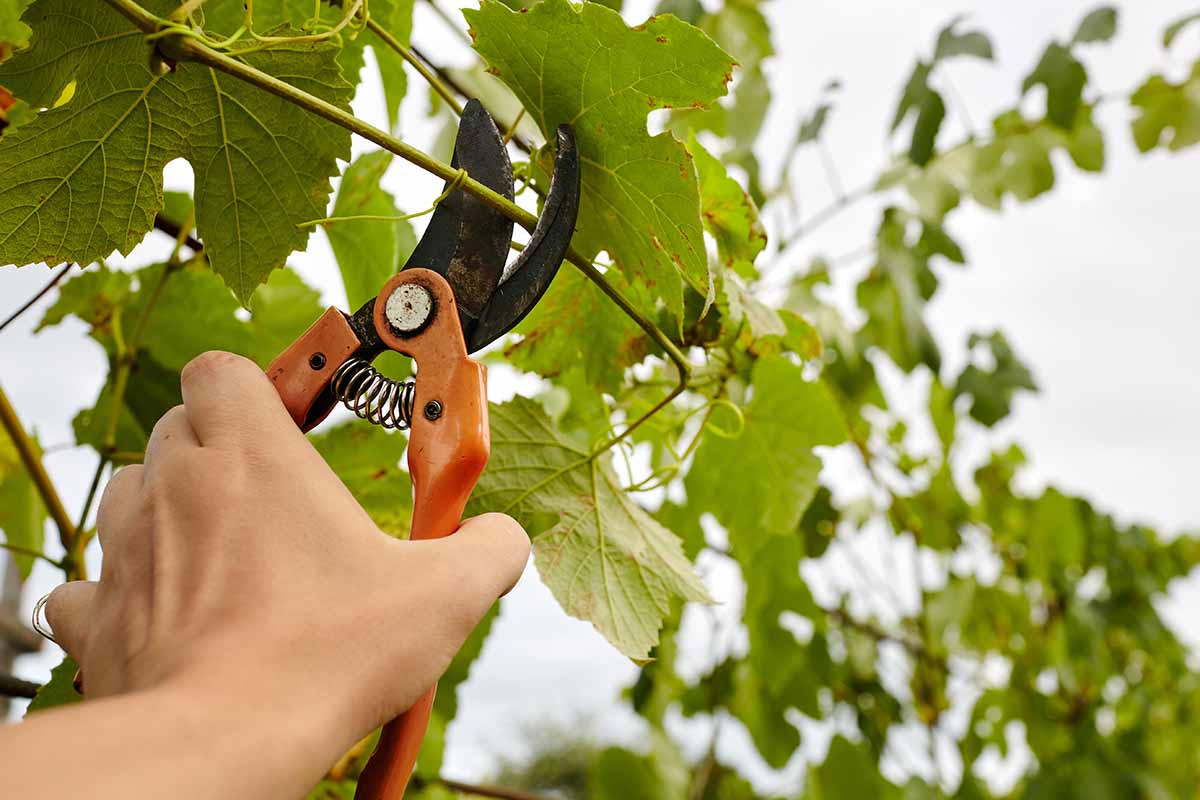Home>Gardening Techniques>Seasonal Gardening>When To Start Pruning
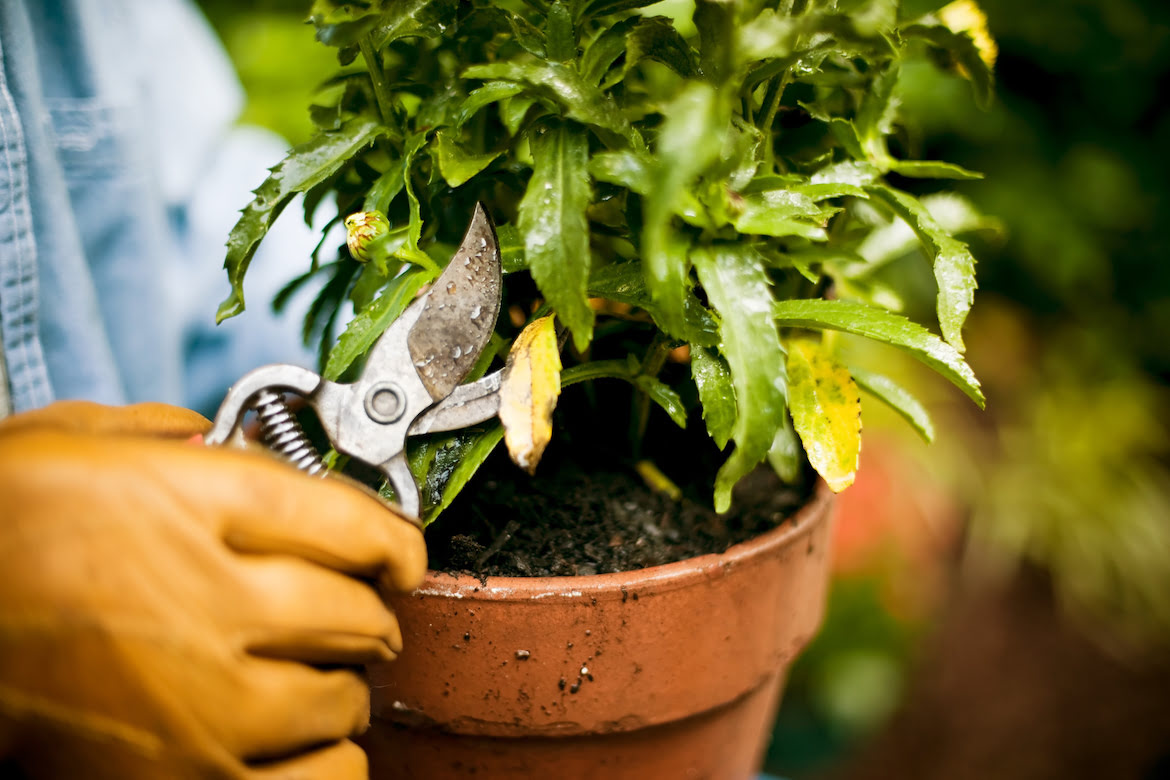

Seasonal Gardening
When To Start Pruning
Modified: January 22, 2024
Learn when to start pruning in your seasonal gardening routine. Find tips and techniques to promote healthy growth and maximize your garden's beauty.
(Many of the links in this article redirect to a specific reviewed product. Your purchase of these products through affiliate links helps to generate commission for Chicagolandgardening.com, at no extra cost. Learn more)
Table of Contents
Introduction
When it comes to seasonal gardening, proper timing is key. Knowing the right time to start pruning is crucial for maintaining the health and beauty of your garden. Pruning is a horticultural practice that involves selectively cutting back parts of plants, such as branches and shoots, to improve their shape, stimulate growth, and remove dead or diseased matter.
By understanding the specific needs of different types of plants and considering various factors, you can ensure that your pruning efforts are successful. In this article, we will explore the optimal timing for pruning trees, shrubs, fruit trees, flowering plants, evergreen trees, deciduous trees, shrubs, and hedges.
Pruning at the right time not only improves the overall appearance of your garden but also promotes plant health and encourages vigorous growth. It is essential to avoid pruning plants during their active growth or when they are susceptible to diseases or pests. Additionally, pruning at the wrong time can result in reduced bloom or fruit production and weakened plants.
Understanding the specific needs of each plant and considering factors such as the plant’s growth habit, flowering period, and dormancy cycle will guide you in determining the appropriate time to start pruning. Let’s explore the optimal timing for pruning different types of plants in detail.
Understanding Pruning
Pruning is a fundamental practice in gardening and plays a vital role in maintaining the health, shape, and productivity of plants. By removing dead or diseased branches, thinning out overcrowded areas, and shaping the plant’s structure, pruning promotes proper growth and development.
One key aspect of understanding pruning is knowing the different types of cuts. The three main types are:
- Thinning cuts: These cuts involve selectively removing branches at their point of origin, creating more space within the plant. Thinning cuts help improve air circulation and light penetration, reducing the risk of disease and encouraging healthy growth.
- Heading cuts: This type of cut involves removing the terminal portion of a branch, which stimulates lateral growth. Heading cuts are commonly used to control the size and shape of plants, creating a fuller appearance.
- Rejuvenation cuts: As the name suggests, rejuvenation cuts involve cutting the plant back to its base, stimulating new growth. This technique is often used on overgrown or woody plants to renew their vitality and improve overall plant health.
When pruning, it’s important to use sharp, clean tools to make precise cuts without causing unnecessary stress or damage to the plant. Proper technique, such as making cuts at a 45-degree angle just above a healthy bud or lateral branch, ensures a clean wound that promotes faster healing.
Another key aspect of understanding pruning is knowing the plant’s growth habit. Some plants, such as fruit trees and flowering plants, require annual pruning to maintain their productivity and shape. Other plants, like evergreens and shrubs, may only require occasional shaping and corrective pruning.
Understanding the growth habit of different plants will help you determine the best time to prune. Some plants produce flowers or fruits on new growth, while others bloom on old wood. Pruning at the wrong time can either remove potential blooms or fruit or damage the emerging growth.
Lastly, it’s important to remember that not all plants require pruning. Some plants have natural, attractive shapes that should be preserved, and excessive pruning can negatively impact their overall appearance and health. Therefore, always research the specific pruning requirements of each plant to ensure the best results.
Factors to Consider
When determining the right time to start pruning, it’s important to take several factors into consideration. These factors will help ensure that your pruning efforts are effective and yield the desired results. Here are some key factors to consider:
- Plant Type: Different plants have different pruning requirements. Trees, shrubs, fruit trees, flowering plants, evergreens, and deciduous trees all have unique growth habits and blooming periods.
- Growth Stage: Understanding the growth stages of plants is essential for successful pruning. Avoid pruning plants during their active growth phase, as this can disrupt their development and potentially harm the plant.
- Blooming Period: Some plants bloom on old wood, meaning that the flower buds are already present on branches from the previous season. Pruning these plants at the wrong time can result in the removal of potential blooms. On the other hand, plants that bloom on new growth can benefit from pruning before the new growth emerges.
- Disease and Pest Resistance: Some plants are more susceptible to certain diseases or pests during specific times of the year. Pruning at the wrong time may leave plants vulnerable to infections or infestations. It’s important to consider the disease and pest resistance of each plant before pruning.
- Weather Conditions: Extreme weather conditions, such as freezing temperatures or heatwaves, can impact the success of pruning. It’s best to avoid pruning during these periods to prevent additional stress on the plant.
- Plant Health: Pruning should be done on healthy plants. If a plant is diseased or weakened, it’s advisable to address the underlying health issues before pruning. Pruning a sick plant can further weaken it or spread the disease.
- Garden Aesthetics: Consider the overall look and design of your garden. Pruning can enhance the shape, size, and symmetry of plants, ultimately improving the aesthetic appeal of your outdoor space.
By taking these factors into account, you can determine the optimal time to start pruning. Each plant species may have specific requirements, so it’s essential to research or consult with gardening experts to ensure you make the right decisions.
Trees and Shrubs: When to Start Pruning
Pruning plays a crucial role in maintaining the health, shape, and aesthetics of trees and shrubs. The timing of pruning for these plants depends on various factors, including their growth habit, flowering period, and dormancy cycle. Here are some guidelines for pruning trees and shrubs:
Deciduous Trees and Shrubs: The ideal time to prune deciduous trees and shrubs is during late winter or early spring when they are still dormant, before new growth begins. Pruning during this period allows for better visibility of the plant’s structure and encourages vigorous growth during the upcoming growing season.
Evergreen Trees and Shrubs: Evergreen trees and shrubs can be pruned throughout the year, but it’s generally recommended to prune them in early spring before new growth emerges. This timing allows the plants to recover quickly and take advantage of the upcoming growing season.
Flowering Trees and Shrubs: The best time to prune flowering trees and shrubs depends on whether they bloom on old or new wood. Those that bloom on old wood, such as lilacs and magnolias, should be pruned immediately after they finish blooming. Pruning before their blooming period may result in the removal of flower buds. On the other hand, plants that bloom on new wood, such as hydrangeas, can be pruned in late winter or early spring before new growth begins.
Fruit Trees: Pruning fruit trees is essential for maintaining their productivity and shape. The timing of pruning fruit trees varies depending on the type of fruit and the region. In general, it’s best to prune fruit trees during late winter or early spring, before bud break. Pruning during this period promotes healthy growth, improves fruit production, and allows for better disease control.
When pruning trees and shrubs, remember to selectively remove dead, diseased, or crossing branches. Thinning out overcrowded areas will enhance air circulation and light penetration, promoting overall plant health. Additionally, consider the natural shape and growth habit of each tree or shrub when pruning to maintain their aesthetic appeal.
Always use clean and sharp pruning tools to make precise cuts, minimizing the risk of damage or disease transmission. Proper pruning techniques, such as cutting just above a node or lateral branch, will enable a clean wound that heals quickly.
By following these guidelines, you can ensure that your trees and shrubs remain healthy and vibrant throughout the year.
Fruit Trees: When to Start Pruning
Pruning fruit trees is essential for maintaining their health, productivity, and shape. By removing dead or diseased branches, improving air circulation, and allowing light to reach all parts of the tree, pruning promotes optimal fruit production and overall tree vigor. The timing of pruning fruit trees is crucial to ensure successful results. Here are some guidelines for when to prune fruit trees:
Winter Pruning: The dormant period in late winter is the most common time to prune fruit trees. Pruning during this time allows for better visibility of the tree’s structure and provides an opportunity to remove any damaged or crossing branches. It’s best to prune before the tree breaks dormancy in early spring, allowing it to heal quickly and minimize the risk of disease or pest infestation.
After Harvest: Another suitable time to prune fruit trees is after the harvest. Once the fruit has been picked, you can assess the tree’s condition and remove any weak or non-productive branches. Pruning after harvest helps promote new growth and allows the tree to allocate its resources more efficiently.
Young Tree Pruning: When it comes to young fruit trees, pruning is crucial for shaping their growth and establishing a strong frame. It’s recommended to prune young trees during their first few years, focusing on creating a well-balanced structure with strong scaffold branches. Early pruning helps ensure a healthier and more productive tree in the long run.
Summer Pruning: While winter pruning is the primary pruning time for fruit trees, some limited pruning can be done during the summer months. Summer pruning is typically done to control the size of the tree, improve air circulation, and manage excessive growth. It’s essential to avoid heavy pruning during summer, as this can lead to sunburn and stress on the tree.
When pruning fruit trees, it’s vital to follow proper techniques. Remove any dead, diseased, or damaged wood, as well as water sprouts and suckers that compete with the main branches for nutrients. Make clean cuts just above healthy buds or lateral branches, taking care to create a smooth surface that allows for quick healing.
Keep in mind that different fruit tree species have specific pruning requirements, so it’s important to research or consult with local gardening experts for guidance on the particular needs of your fruit trees. Additionally, consider the specific growth habits and fruiting patterns of your trees, as these factors can affect the timing and extent of pruning.
By following these guidelines and understanding the unique needs of your fruit trees, you can ensure proper pruning that will promote healthy growth, abundant fruit production, and the overall longevity of your fruit trees.
Flowering Plants: When to Start Pruning
Pruning flowering plants is necessary to promote healthy growth, enhance blooming, and maintain their overall appearance. However, the timing of pruning is crucial to ensure that you don’t inadvertently remove flower buds or disrupt the plant’s flowering cycle. Here are some guidelines for when to start pruning flowering plants:
Blooming Time: The blooming time of flowering plants can vary. It’s essential to understand whether a plant blooms on old wood or new wood. Plants that bloom on old wood develop flower buds during the previous growing season, so pruning them too late in the season or during early spring can result in the removal of potential blooms. Examples of plants that bloom on old wood include lilacs, magnolias, and forsythia. Prune these plants immediately after they finish flowering to allow ample time for new buds to develop for the next season.
Blooming on New Wood: Some flowering plants produce flowers on new wood, which means they develop buds on new growth during the current growing season. Examples include hydrangeas, butterfly bushes, and roses. For these plants, you can prune them in late winter or early spring before new growth emerges. Pruning during this time stimulates vigorous new growth and encourages abundant blooms during the upcoming season.
Shape and Size Control: In addition to timing, pruning can also be done to control the shape and size of flowering plants. Light corrective pruning can be performed throughout the year to remove straggly or overgrown branches, maintain a compact form, or encourage branching for a fuller appearance. However, avoid heavy pruning during the blooming season, as this can impact flower production.
Deadheading: Deadheading, or removing spent flower heads, is an essential maintenance practice for many flowering plants. This encourages the development of new blooms and prolongs the overall blooming period. Deadheading can be done throughout the blooming season, ensuring that you remove faded flowers without cutting into healthy branches.
When pruning flowering plants, it’s important to use clean, sharp tools to make precise cuts. Aim to prune just above a healthy bud or lateral branch, ensuring a clean wound that promotes faster healing. Consider the natural growth habit of each plant and shape them accordingly, removing any diseased or damaged branches in the process.
Research the specific pruning requirements of your flowering plants, as different species may have different needs. Consult gardening resources or seek advice from local experts if you’re unsure about the best time and approach for pruning specific flowering plants in your garden.
By understanding when to start pruning your flowering plants and following proper techniques, you can maintain their health, encourage abundant blooms, and create an inviting and visually stunning garden.
Evergreen Trees: When to Start Pruning
Pruning evergreen trees is essential for maintaining their shape, health, and overall appearance. Unlike deciduous trees that shed their leaves in winter, evergreen trees retain their foliage year-round. The timing of pruning evergreen trees is important to ensure optimal results and minimize stress on the tree. Here are some guidelines for when to start pruning evergreen trees:
Early Spring: Early spring is generally the best time to prune evergreen trees. Pruning at this time allows the tree to benefit from the upcoming growing season, as the fresh growth emerges soon after. This timing provides ample time for the tree to heal and recover from pruning before the hotter months ahead. Pruning in early spring also allows you to remove any winter damage or dead branches that may have occurred.
Winter Dormancy: Pruning evergreen trees during their winter dormancy is also an option. The cold temperatures and reduced activity during this period make it an ideal time to shape the tree and remove any unwanted or overgrown branches. However, take caution not to prune too close to the onset of spring when the tree starts to break dormancy.
Year-Round Pruning: While early spring and winter dormancy are the recommended times to prune evergreen trees, light pruning and maintenance can be performed throughout the year. Regularly removing any dead, diseased, or damaged branches should be done promptly regardless of the season. However, avoid heavy pruning during the hotter months as it may stress the tree and make it more susceptible to pests and diseases.
When pruning evergreen trees, start by removing any dead or diseased branches. Thin out any overcrowded areas to improve air circulation and light penetration into the inner canopy. Take care not to remove too many branches at once, as this can weaken the tree and disrupt its overall health.
It’s important to use clean, sharp tools when pruning evergreen trees to make smooth cuts that promote faster healing. Prune just above a healthy bud or lateral branch, ensuring a clean wound without leaving stubs. Avoid leaving large wounds on the tree, as they can be more susceptible to pests and diseases.
Remember that different species of evergreen trees may have specific pruning requirements. Research or consult with local gardening experts for guidance on the particular needs of your evergreen trees.
By following appropriate pruning practices and timing, you can help your evergreen trees maintain their shape, health, and beauty throughout the year.
Deciduous Trees: When to Start Pruning
Pruning deciduous trees is an important aspect of their care and maintenance. Deciduous trees, which shed their leaves in winter, benefit from pruning to improve their structure, promote healthy growth, and maintain their overall health. Understanding the timing of pruning for deciduous trees is key to achieving the best results. Here are some guidelines for when to start pruning deciduous trees:
Winter Dormancy: The winter months, when deciduous trees are dormant, are an ideal time for pruning. Pruning during this period allows for better visibility of the tree’s structure and simplifies the process as there are no leaves to hinder access. Winter pruning also encourages the tree to produce new growth in the spring and promotes overall tree vigor.
Early Spring: Early spring, before the tree begins to break dormancy, is another suitable time for pruning deciduous trees. Pruning during this time allows for the removal of any damaged, diseased, or dead branches that may have occurred over the winter. It also provides an opportunity to shape the tree and promote healthy new growth as the growing season commences.
Blooming Period: Some deciduous trees, like flowering varieties, have specific flowering periods that should be taken into account when pruning. These trees should be pruned immediately after flowering to avoid removing potential blooms for the following season. Examples of trees that should be pruned after flowering include dogwoods and cherry blossoms.
Maintenance Pruning: Besides seasonal pruning, maintenance pruning of deciduous trees can be done throughout the year as needed. Maintenance pruning involves the removal of dead or diseased branches, addressing any structural issues, and thinning out crowded areas to improve airflow and light penetration. However, it is best to avoid heavy pruning during the active growing season to minimize stress on the tree.
When pruning deciduous trees, it’s essential to follow proper techniques. Remove any dead, damaged, or crossing branches, ensuring clean cuts just above a branch collar or lateral branch. Avoid leaving large stubs and aim for a smooth, clean pruning wound that promotes quick healing.
Keep in mind that different species of deciduous trees may have specific pruning requirements or recommendations. It’s beneficial to research or consult with local arborists or gardening experts to understand the particular needs and timing for pruning your specific deciduous tree species.
By pruning deciduous trees at the appropriate time and with proper techniques, you can enhance their structure, health, and overall beauty, ensuring their continued vitality for years to come.
Shrubs and Hedges: When to Start Pruning
Proper pruning is essential for maintaining the health, shape, and density of shrubs and hedges. Pruning these plants at the right time ensures optimal growth, encourages flowering or fruit production, and maintains their overall aesthetic appeal. Here are some guidelines for when to start pruning shrubs and hedges:
Spring: Spring is generally considered a suitable time to start pruning shrubs and hedges. As the new growth begins to emerge, you can assess the plant’s structure and selectively remove any damaged, dead, or diseased branches. Spring pruning also allows you to shape the shrubs and hedges, promoting a neat and tidy appearance for the growing season.
After Flowering: For flowering shrubs, it’s essential to prune them after they finish blooming. Pruning immediately after the flowering period allows the plant to divert its energy into producing new growth and forming buds for the next season. Examples include lilacs, azaleas, and forsythias. Timing is crucial for these shrubs to avoid removing the flower buds for the upcoming year.
Summer: Summer pruning can also be done on certain shrubs and hedges that tend to experience rapid and vigorous growth during the growing season. Summer pruning focuses on controlling the size and shape of the plants. However, it’s important to avoid pruning during excessively hot and dry periods, as this can stress the plants.
Winter Dormancy: While spring is the preferred time to prune shrubs and hedges, some can also be pruned during their winter dormancy. Dormant pruning allows for better visibility and access to the plant’s structure, making it easier to identify and remove any problematic or unwanted branches. However, take care not to prune too close to the onset of spring when new growth starts.
When pruning shrubs and hedges, consider the specific growth habit and natural shape of the plant. Aim to create a harmonious and balanced form, removing any overgrown or crossing branches. Thinning out crowded areas allows for better airflow and light penetration, preventing diseases and promoting healthy growth.
Use clean, sharp pruning tools to make precise cuts just above a bud or lateral branch. This promotes proper healing and reduces the risk of disease transmission. Avoid leaving large stubs, as they can be more susceptible to pests or diseases.
Shrubs and hedges may have specific pruning requirements, depending on their species and varieties. Take the time to research or consult with gardening experts to understand the specific pruning needs and timing for your particular shrubs and hedges.
By pruning shrubs and hedges at the appropriate time and following proper techniques, you can ensure their health, promote vigorous growth, and create well-maintained and attractive outdoor spaces.
Final Thoughts
Pruning is a critical practice in seasonal gardening, and understanding the optimal timing for pruning different plants is key to achieving successful results. By considering factors such as the plant type, growth stage, blooming period, weather conditions, and specific pruning requirements, you can tailor your pruning efforts to each plant’s unique needs.
Whether you are pruning trees, shrubs, fruit trees, flowering plants, evergreens, or deciduous trees, following proper pruning techniques is essential. Using clean, sharp tools and making precise cuts promotes faster healing and reduces the risk of disease transmission. Selectively removing dead, damaged, or diseased branches enhances overall plant health, improves air circulation, and stimulates new growth.
Remember, each plant has its own growth habit and timing for blooming or fruit production. Pruning at the wrong time can compromise the plant’s ability to bloom or bear fruit. By researching the specific pruning requirements of your plants or consulting with gardening experts, you can ensure that you are pruning at the optimal time for maximum benefit.
Additionally, always consider the overall aesthetics of your garden when pruning. Properly shaped and maintained plants enhance the visual appeal of your outdoor space and create an inviting atmosphere.
Lastly, bear in mind that pruning is just one aspect of maintaining a healthy garden. Adequate watering, fertilization, and pest control are equally important for the well-being of your plants. Regularly monitoring your garden and addressing any issues promptly will contribute to the long-term success and vitality of your plants.
With a deep understanding of seasonal gardening and the proper timing for pruning, you can confidently nurture your garden, ensuring the health, beauty, and productivity of your plants year after year.


